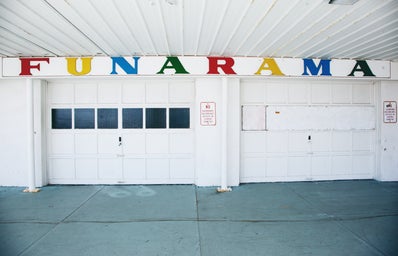If you’ve taken chemistry beyond the middle school level, you’ve likely spent some time learning about Marie Curie. During her life, she discovered two elements, won two Nobel Prizes and, what you likely didn’t know, single-handedly raised two daughters.
What you also likely didn’t know was that her daughters kicked a$$.
In particular, you probably weren’t aware of her oldest, Irene, who also went on to become an esteemed scientist and bring another Nobel Prize back for the family. And honestly? That’s not even the most impressive thing about her.
When Irene was still very young, it was clear to Marie that both her daughters were incredibly bright.
On their behalf, Marie helped form a tiny private school called The Cooperative, where she and her other expert colleagues could educate the nine children among them at what was essentially the best school in all of Paris.
Irene went on from The Cooperative to advance through several elite schools, always exceeding expectations and always forced to find new challenges. She was in college by age sixteen, and she would have continued with her undergraduate degree, if not for the beginning of World War I.
With the war effort, Irene joined her mother to become a field nurse radiographer and went into active battlefields, setting up mobile radiology units. This was cutting edge technology that took trained technicians years to study. She, however, was learning from the woman who practically invented radioactivity and mastered the practice within a few months.
All this at the age you were probably studying for the SAT.
When Irene had practiced enough to operate on her own though, she and her mother decided they could accomplish more apart. At seventeen, Irene began navigating her way from battle site to battle site, wherever her assistance was most needed.
Her work had her mechanically building the radiology units from mobile kits and teaching doctors how to use them to find shrapnel in bodies. By doing this, she saved countless lives and earned a military medal by the end of the war. It’s estimated that Irene and the other women working for Madame Curie administered mobile X-rays to 1 million soldiers during the fighting.
Afterward, Irene began to work for her mother again, back in the academic field, and, in the process of earning her doctorate’s degree, she met her husband while working administration in his lab.
Together, the two of them would go on to earn the 1935 Nobel Prize for their work in beta decay, or the process of turning elements into other radioactive elements safely, quickly and cheaply. This achievement made the Curie family the most highly-decorated Nobel winners in history.
Throughout Irene’s life, she was a staunch feminist, and she worked fervently to make science and general education more accessible to young girls everywhere. Her experiences in battle left her a strong anti-war proponent, and her work in advocacy ultimately helped lead to the World Peace movement.


